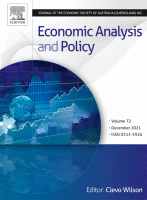Housing quality, remoteness and Indigenous children’s outcomes in Australia
In Australia, the Indigenous population disproportionately resides in more remote parts of the country, and a number of outcomes for Indigenous children decline with remoteness.
It is widely accepted that inferior housing conditions, notably crowding, contribute to Indigenous disadvantage in remote communities, and this has become a focus of policy despite limited direct empirical evidence.
Data from the Longitudinal Study of Indigenous Children are used to analyse children’s outcomes in the domains of physical health, social and behavioural adjustment, and educational achievement conditional upon remoteness and housing circumstances.
For housing, variables relating to housing affordability stress, frequent moves, tenure and dwelling type and a range of measures of crowding are tested. The results suggest variation in housing conditions plays a relatively minor role in children’s physical health and social and emotional development.
The most robust associations identified are between homeownership status and educational achievement. However, housing factors are not found to have significant mediating roles in the relationship between remoteness and children’s outcomes.
The findings provide grounds for caution that a focus on housing should not distract policy efforts away from other potentially important determinants of the wellbeing of Indigenous children in remote Australia.




